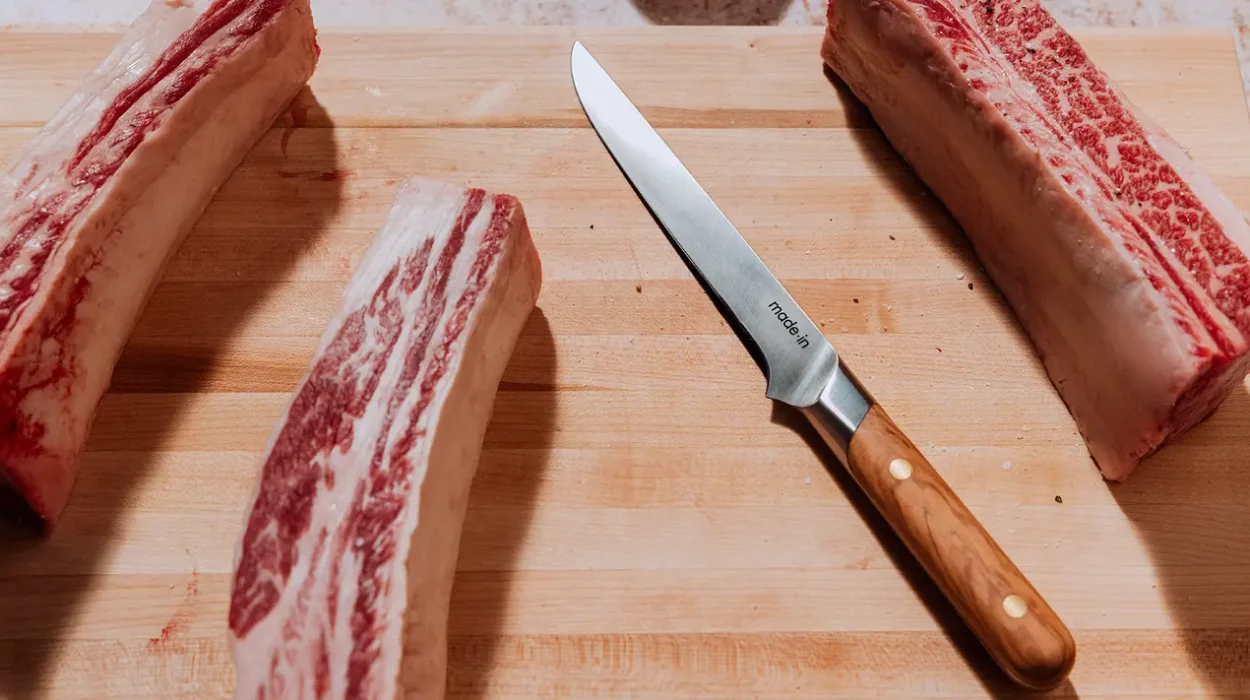Choosing the right boning knife is crucial for kitchen professionals and home cooks alike. When it comes to selecting between a flexible vs stiff boning knife, understanding their distinct advantages can vastly enhance your culinary experience. Let’s dive into the world of boning knives and explore which one suits your needs best.

What Are Boning Knives?
Boning knives are specialized knives designed to remove bones from meat, poultry, and fish. They are characterized by their thin blade, which allows for precision cutting. The primary distinction between boning knives lies in the flexibility of their blades.
The Flexible Boning Knife
The flexible boning knife is designed with a blade that can bend and contour around bones. This feature makes it ideal for delicate tasks such as filleting fish or removing skin from poultry. The flexibility allows the knife to move smoothly along the contours of the meat, minimizing waste.
Advantages of a Flexible Boning Knife
- Precision: Ideal for intricate work.
- Versatility: Great for handling different types of meat.
- Reduced Waste: Minimizes meat loss.
The Stiff Boning Knife
On the other hand, a stiff boning knife has a rigid blade that provides excellent control and strength. This type of knife is perfect for tougher meats and larger cuts, where a firmer grip is necessary to exert more pressure.
Advantages of a Stiff Boning Knife
- Strength: Suitable for larger, tougher cuts of meat.
- Control: Provides more precision in heavier tasks.
- Durability: Less likely to break under pressure.
Choosing Between Flexible vs Stiff Boning Knife
Your choice between a flexible and stiff boning knife depends on your cooking needs. Consider the types of dishes you prepare frequently. If you often work with fish or poultry, a flexible knife might serve you better. For handling beef or pork, a stiff knife could be more appropriate.
Considerations for Kitchen Professionals
Professional chefs often require both types of knives to accommodate a range of culinary tasks. Investing in quality knives enhances efficiency and improves the quality of food preparation. Learn more about cutting techniques with German knives for more insights.
Maintenance and Care
Proper maintenance is key to extending the lifespan of your boning knives. Regular sharpening and careful storage are essential practices. Discover helpful knife safety tips to protect your investment.
Conclusion
Understanding the differences between a flexible vs stiff boning knife is crucial for making an informed decision. Each type has its own unique benefits, and choosing the right one can greatly impact your culinary success. Whether you are a professional chef or a home cook, having the right tools makes all the difference. Consider your cooking style, the meat you handle most frequently, and invest in the boning knife that best suits your needs.
Further Reading
For more detailed information on boning knives, visit Wikipedia or read about boning knife uses to expand your knowledge.

FAQ
What is the main difference between a flexible and stiff boning knife?
The primary difference lies in the blade’s flexibility. A flexible boning knife is suited for delicate tasks, while a stiff one is ideal for tougher meats.
Can I use a flexible knife for all types of meat?
While versatile, a flexible knife may not be optimal for tougher meats like beef. A stiff knife offers better control for such tasks.
How often should I sharpen my boning knife?
Regular sharpening is recommended. Depending on usage, this could range from weekly to monthly. Proper maintenance ensures the knife’s longevity and performance.
This article contains affiliate links. We may earn a commission at no extra cost to you.


